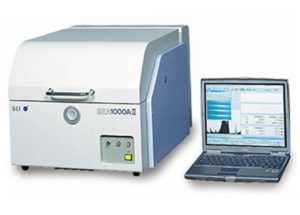RoHS detector

RoHS Detector is the EU RoHS test standard testing equipment. Simple to say is the test lead Pb, cadmium Cd, mercury Hg, hexavalent chromium Cr6 +, PBDE PBDE, PBB PBB six kinds of harmful substances instruments.
RoHS Directive is the country that just enacted “electronic and electrical equipment restrictions on the use of certain hazardous substances,” the short name. As its name implies, the RoHS detector is a detection ROHS detector, the principle is the use of X-ray detection of ROHS standard elements in the content.
RoHS detector currently on the market, the common type of X-ray fluorescence analyzer, is divided into energy dispersive and wavelength dispersion type, energy dispersive type because of its technical principles and structure than the wavelength dispersion type is simple, are more common in the market, the technology principle:
Characteristic X-rays
The X-ray or Γ-ray emitted by the radioisotope source or X-ray generator interacts with the atoms of the elements in the sample and exits the inner electron of the atom. When the outer electron complements the inner electron, it radiates X-ray-characteristic X-rays that are inherent in the atom.
Relationship between element content and characteristic X-ray intensity
Different elements of different characteristics of X-ray energy, according to qualitative analysis; then according to the size of the characteristic X-ray intensity, quantitative analysis.
RoHS detector is to control the manufacturer’s products harmful to human health, and heavy metal content. As air conditioners, washing machines, vacuum cleaners, water heaters, and cell phones, these products are often encountered in people’s lives, and excessive levels of heavy metals will affect human health.
It is recommended that manufacturers strictly control the heavy metal content to protect the health of consumers.
In addition to the spectrometer, certain sample preparation techniques must be used in order to obtain qualitative and quantitative information on the sample. Spectral analysis and data processing of the obtained intensities must also be carried out.
Commonly used RoHS testing methods
1. Cation and valence
Cesium-containing cation chromatography, ion-selective electrode method, and atomic absorption method can be detected to determine the valency of the cation element can be analyzed by voltammetric polarography.
2. Anion
British blue technology ion chromatography, the use of oxygen bomb combustion, British blue pre-treatment technology, directly into the ion chromatography for the analysis.
RoHS detector detects the elements
The content of elements in the ROHS standard is detected by X-ray. These elements include:
1. Lead 1000ppm the following
2. Mercury 1000ppm the following
3. Cadmium 100ppm or less
4. Hexavalent chromium 1000ppm or less
5. Polybrominated biphenyls (PBB) 1000ppm or less
6. Polybrominated diphenyl ethers (PBDEs) below 1000ppm
Metallic materials to be tested four kinds of harmful metal elements such as (Cd Cd / Pb lead / Hg mercury / Cr6 + hexavalent chromium)
In addition to examining the four hazardous heavy metals, plastic materials need to be tested for brominated flame retardants (PBBs / PBDEs) and also for packaging materials of different materials (94 / 62 / EEC).
You may also be interested in below other C&T RF Antennas Inc‘s antenna test equipment:
